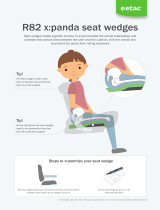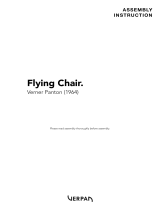
2
G
B
GB
CONTENTS
Panther .............................................................................. 3
Safety ................................................................................ 4
Tools .................................................................................. 4
Maintenance ...................................................................... 4
Warranty ............................................................................ 5
In and out of the chair ........................................................ 5
Roadability 1/4 ................................................................... 6
Roadability 2/4 ................................................................... 7
Roadability 3/4 ................................................................... 8
Roadability 4/4 ................................................................... 9
Quick release (QR) .......................................................... 10
Brakes & anti-tip device ................................................... 11
Central brake ................................................................... 12
Seat & back rest angling.................................................. 13
Gasspring adjustment...................................................... 14
Seat placement................................................................ 15
Rear wheel positions ....................................................... 16
Choise of front fork at different seat heights .................... 17
Foot supports................................................................... 18
Armrests and splashboards ............................................. 19
Table ................................................................................ 19
Pommel and back extension ........................................... 20
Push handle..................................................................... 20
Head supports ................................................................. 21
Swing-away shoulder supports........................................ 22
Swing away side supports ............................................... 23
Swing away knee supports .............................................. 23
Thermo bag and tain cape............................................... 24
Abduction strap................................................................ 25
Crossvest and vest .......................................................... 26
H-strap and hip strap ....................................................... 26
Drum brakes 1/3 .............................................................. 27
Drum brakes 2/3 .............................................................. 28
Drum brakes 3/3 .............................................................. 29
Mounting the 12½” Wheel ............................................... 30
Mounting/adjusting the hand brake & cable .................... 31
Transportation/storage .................................................... 32
Transportation in motor vehicles 1/2 ..............................................................33
Transportation in motor vehicles 2/2 ............................... 34
For carriage on public transport....................................... 35
Product identifikation ........................................................ 36
Measurements ................................................................. 37
Techinical data ................................................................. 38
Producer .......................................................................... 38
Distributor ........................................................................ 38



























